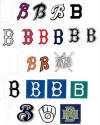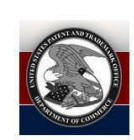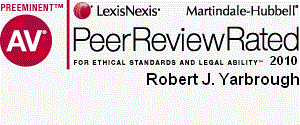Newsletter Issue 21 - November, 2010
In this issue:
Ask Dr. Copyright - Copyright
'Safe Harbors' part I
Policing Trademarks
Deferred Examination of Patent Applications
Inventor's Eye
 Ask
Dr. Copyright...
Ask
Dr. Copyright...
AARGH, Me Hearties! There Be Pirates About, and We Be Needin' a Safe Harbor (Part 1)!
Many individuals, companies and non-profits now have "blogs" where they invite comments and questions from readers. Most of those operating blogs and other websites seem unaware that they could be subject to suit for copyright infringement if materials posted by others are alleged to violate the exclusive rights of copyright holders. Many bloggers have fallen prey to these suits when comments posted contain quotations from news articles, song lyrics, or video clips. Hundreds of these suits have been settled out of court for thousands of dollars, each, while those who choose to go to court often spend tens of thousands of dollars to defend themselves - usually without success.
United States Copyright Law contains a provision to protect a blog owner or other site or network operator from such law suits. Known as the "safe harbor" provision of the Digital Millennium Copyright Act ("DMCA", 17 U.S.C. §512), this law provides for a series of notices and counter-notices that effectively let a blog owner "duck" while the copyright owner and pirate lob cannonballs overhead. To be able to use the safe harbor, however, blog operators and others must follow the notice and registration requirements of the law.
Because most blogs allow readers to post comments and other responsive materials, the owners of the blog is not just a publisher of content, but is also a "service provider" subject to the terms of the Digital Millenium Copyright Act (DMCA).
The DMCA allows anyone whose copyrights have been infringed to issue a "takedown notice" to the service provider of a site containing the materials. The notice, found at Section 512(c)(3), must be quite specific, and must include:
The name, address, and electronic signature of the complaining party;
The infringing materials and their Internet location, or if the service provider is an "information location tool" such as a search engine, the reference or link to the infringing materials;
Sufficient information to identify the copyrighted works;
A statement by the owner that it has a good faith belief that there is no legal basis for the use of the materials complained of; and
A statement of the accuracy of the notice and, under penalty of perjury, that the complaining party is authorized to act on the behalf of the owner.Upon receiving the takedown notice, the service provider must take prompt action to disable access to or to remove the identified materials, and then to give notice to the person who posted the materials (if that person can be identified.)
The person who posted the materials removed after the notice may then, under the DMCA, provide a "counter notice" found at section 512(g)(3).
If the counter notice is given, then the service provider must reverse its takedown and restore access to the materials. After counter notice, the copyright owner has 14 days in which it must file an infringement law suit if it wants the materials to remain off the Internet.
So, you may ask, "What, exactly, does all of this complicated legal mumbo-jumbo have to do with me?"
Good question, Binky! Stay tuned for next month's installment to
learn what you should do to steer into that safe harbor, and away
from both the pirates and the lawyers.
Lawrence Husick
Policing Trademarks is Important but Have We Gone Too Far?
Policing your trademarks is as important as registering them.
Policing requires that you monitor the world of commerce to insure
that others are not using your marks -- or confusingly similar marks
--- and, if so, that you take immediate action against the
infringers. Big corporations zealously defend their trademark
portfolios but have they taken their policing responsibilities too
far? Here's a smattering of recent news
Facebook --- the world's largest social network -- recently sued Lamebook, a so-called parody web site -- for trademark infringement.
Facebook contends that
Lamebook is not a legally protected parody but is trading off of
"Facebook's popularity and fame." Since Facebook has no sense of
humor, Lamebook has resorted to Twitter to get the word out. Here's what it says on the
Lamebook web site: "Well, Facebook didn't like
us sticking up for ourselves, so they shut down our Fan Page, are
preventing any users from "liking" us, and won't even let you share
URLs with your friends if they point to Lamebook. In light of this,
be sure to follow us on Twitter so you get updated with the latest
and funniest of the lame!"
to get the word out. Here's what it says on the
Lamebook web site: "Well, Facebook didn't like
us sticking up for ourselves, so they shut down our Fan Page, are
preventing any users from "liking" us, and won't even let you share
URLs with your friends if they point to Lamebook. In light of this,
be sure to follow us on Twitter so you get updated with the latest
and funniest of the lame!"
![]() In a battle between pharmacy and grocery giants, Walgreens filed
suit agains Wegmans supermarket chain in Virginia federal court,
alleging that Wegman's stylized "W" trademark is confusingly similar
to that of Walgreens.
In a battle between pharmacy and grocery giants, Walgreens filed
suit agains Wegmans supermarket chain in Virginia federal court,
alleging that Wegman's stylized "W" trademark is confusingly similar
to that of Walgreens.
 According to Walgreens, its "flying W" deserves trademark
protection because it has been in use since 1951; Wegmans countered,
alleging that the scripted "W'' it adopted in 2008 is actually a
copy of logos used by the supermarket in the 1930s. Interestingly,
one source states that both companies used the same design firm for
their logos. The trademark battle suggests that in this age of super
stores, the line between pharmacies and grocery businesses is thin.
According to Walgreens, its "flying W" deserves trademark
protection because it has been in use since 1951; Wegmans countered,
alleging that the scripted "W'' it adopted in 2008 is actually a
copy of logos used by the supermarket in the 1930s. Interestingly,
one source states that both companies used the same design firm for
their logos. The trademark battle suggests that in this age of super
stores, the line between pharmacies and grocery businesses is thin.
 Another source -- tongue in cheek -- suggested that Walgreens should
be suing the Washington Nationals because the team's W is an even
closer match. Nice try but we think that might stretching the
thin line to the breaking point.
Another source -- tongue in cheek -- suggested that Walgreens should
be suing the Washington Nationals because the team's W is an even
closer match. Nice try but we think that might stretching the
thin line to the breaking point.
In a recent opposition action, five Major League Baseball clubs
(no, not the Nationals) have opposed registration of the mark "B"
(no quotes) for children's books. They claim that the mark creates a
likelihood of confusion and false association -- under Sections 2(d)
and 2(a) of the Trademark Act -- with their own multifarious "B"
marks. Atlanta National League Baseball Club, et. al. v. Battat
Incorporated, Opposition No. 91196839. The baseball teams claim that
they use their marks to identify various goods, including printed
material. They further assert that such a broad registration could
hamper their development of other "B" marks.
Atlanta National League Baseball Club, et. al. v. Battat
Incorporated, Opposition No. 91196839. The baseball teams claim that
they use their marks to identify various goods, including printed
material. They further assert that such a broad registration could
hamper their development of other "B" marks.
Heard enough? Well, the Secretary of Commerce has recently been
empowered to "conduct a study and report to the Committees on the
Judiciary of the House and Senate on "(1) the extent to which small
businesses may be harmed by litigation tactics by corporations
attempting to enforce trademark rights beyond a reasonable
interpretation of the scope of the rights granted to the trademark
owner; and (2) the best use of Federal Government services to
protect trademarks and prevent counterfeiting." To that end, the
USPTO is requesting feedback from U.S. trademark owners,
practitioners, and others regarding their experiences with
litigation tactics, especially those involving an attempt to enforce
trademark rights beyond a reasonable interpretation of the scope of
the rights granted to the trademark owner.
Adam Garson
The U.S. Patent and Trademark Office Announces a Pilot Program
for Deferring Examination of Patent Applications
The PTO is taking another step to reduce its workload through deferring examination of patent applications. The PTO has announced that it will soon start a pilot program to allow inventors to defer the payment of certain filing fees by one year. The stated goal of the pilot program is to allow inventors a total of two years to develop their inventions and test the market before incurring the costs of a utility application. The goal is laudatory; however, the proposal does not achieve that goal. In fact, achieving the stated goal would require changes to the patent statute and renegotiation of the Patent Cooperation Treaty. Don't hold your breath.
The pilot program will allow an inventor the option of following a provisional patent application with a full utility application having at least one claim within one year but will allow the inventor to request deferred examination of the utility application for one year.
The benefit to the inventor is that the inventor can defer the costs of developing a full set of claims for two years and defers $380.00 in PTO fees for one year. Two items are required to make this system work: (a) a high-quality provisional application that meets the written description, best mode and enablement requirements; and (b), the firm knowledge that the inventor will not seek patent protection in other countries.
The deferral system has risks for inventors. The principal risk
stems from the fact that the inventor will not supply a full set of
claims at the time of filing the utility application. As a result,
the inventor may not know all of the elements necessary to support
the claims and inadvertently may leave out elements from the
disclosure. Those missing elements cannot be added back in later. If
one of the bar dates passes (one year from public use, one year from
sale or offer for sale, one year from publication of an enabling
disclosure), then the inventor will be out of luck and lose all
ability to patent the invention.
Robert Yarbrough
PTO's "InventorsEye" On-Line Publica tion Provides Lists of
Resources for Inventors
tion Provides Lists of
Resources for Inventors
"InventorsEye" is a bimonthly online publication by the U.S. PTO
for individual inventors. Among other things, the publication
gathers resources for individual inventors, such as inventor's clubs
and support organizations. "InventorsEye" is a publication of the
Inventors Assistance Center. If you're an inventor, check it out.
Robert Yarbrough

